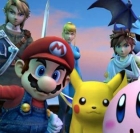-
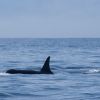 +28 +9
+28 +9Orcas have sunk 3 boats in Europe and appear to be teaching others to do the same. But why?
Scientists think a traumatized orca initiated the assault on boats after a "critical moment of agony" and that the behavior is spreading among the population through social learning.
-
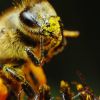 +22 +4
+22 +4Bees can do so much more than you think – from dancing to being little art critics
We all know bees are vital pollinators. But they’re also art critics, social learners, dancers and so much more.
-
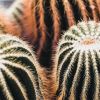 +30 +3
+30 +3Friday essay: peyotes in suburbia – the secret world of Sydney's psychoactive cacti growers
They tend backyards brimming with cactus varieties, consuming the produce. Prudence Gibson meets a hidden group of gardeners and ponders the allure – and – danger of psychoactive plants.
-
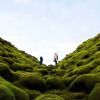 +29 +5
+29 +5An epic global study of moss reveals it is far more vital to Earth's ecosystems than we knew
Data from 123 sites across all continents, including Antarctica, show mosses affect all major soil functions critical for sustaining life on Earth.
-
 +15 +3
+15 +3A Hidden Underwater Resource Is Worth Way More Than Expected, Study Reveals
Researchers have just calculated the value society gets from a common but hidden underwater resource, and found it's way higher than we ever expected.
-
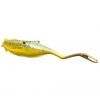 +18 +4
+18 +470-Year-Old Mystery Over Bizarre 'Tully Monster' May Finally Have Been Solved
The most thorough study yet of a mysterious creature that lived 300 million years ago has ruled that it had no bones after all.
-
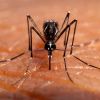 +19 +1
+19 +1Mosquito Saliva Can Actually Suppress Our Immune System, Study Finds
We know mosquitoes are a serious threat to our health as human beings– in fact, they're the world's deadliest animal, with mosquito-borne diseases responsible for more than a million deaths a year.
-
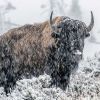 +22 +1
+22 +1Scientists Are Thinking About Cloning an Extinct, Mummified Bison
The newly discovered bison from an unknown extinct species is thought to have been around 1.5-2 years old when it died between 8,000 and 9,000 years ago, according to scientists at the Mammoth Museum of North-Eastern Federal University in Russia.
-
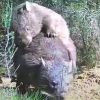 +19 +1
+19 +1Rarely Seen Wombat 'Sideways' Sex Shows Just How Wild Animal Reproduction Can Get
If you look at where wombats deposit their poo, you realize they must be able to perform some surprising acrobatics.
-
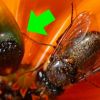 +15 +2
+15 +2This Incredible Flower Makes Fake Flies, And We Finally Know How
A flower's ability to mimic the sexually attractive traits of pollinators to lure them to its nectar has long fascinated scientists.
-
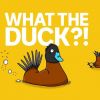 +19 +1
+19 +1NSFW Purely for Pleasure
For years we've barely even talked about the human clitoris let alone the fact that snakes have TWO. This program has adult themes.
-
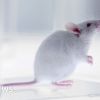 +11 +1
+11 +1Breakthrough as eggs made from male mice cells
A Japanese researcher has told a major genetics conference that he has created eggs from the cells of male mice. The research, still in its early stages, involved turning male XY sex chromosomes into female XX ones.
-
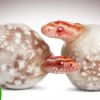 +23 +4
+23 +4The Bizarre Evolution of Hemipenes (yes...hemipenes.)
-
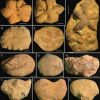 +33 +2
+33 +2This Strange Ancient 'Fossil' May Not Have Been Left by Any Living Thing
An ancient three-dimensional star-shaped 'thing' still baffles scientists more than a century after its discovery.
-
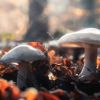 +20 +3
+20 +3Does a Vast Network of Fungi Connect Forests? Here's What We Know.
The possibility that communication networks of fungi exist connecting forest ecosystems in a 'wood-wide web' has increasingly gained attention among researchers in recent decades.
-
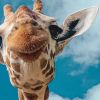 +19 +4
+19 +4The Sex Lives of Giraffes Are Weirder Than We Ever Realized
If you think you have trouble telling when someone's into you, just be grateful you're not a giraffe.
-
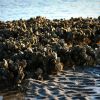 +16 +2
+16 +2Can Interactive Mapping Tools Guide Shellfish Restoration?
Researchers in North Carolina have developed software that can determine the best place to rebuild oyster habitats, in an effort to rejuvenate the marine population.
-
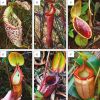 +20 +1
+20 +1This Species of Carnivorous Plant Evolved Into a Toilet And Is Now Winning at Life
Some species of carnivorous pitcher plant, Nepenthes, have switched from capturing and digesting insects to absorbing animal poop for their daily dose of nutrients – and it's a switch that's proving very beneficial.
-
 +24 +4
+24 +4Scientists still don't know why we have pubic hair
But they have some very compelling theories
-
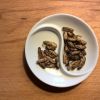 +4 +1
+4 +1Making the case for using insects as food for both humans and livestock
Two pairs of academics are making the case for using insects as a food source in Perspectives pieces published in the journal Science. The first pair, Arup Kumar Hazarika and Unmilan Kalita, with Cotton University and Barnagar College, respectively, both in India, argue that a strong case can be made for using insects to meet the growing need for food around the world in the coming years.
Submit a link
Start a discussion



